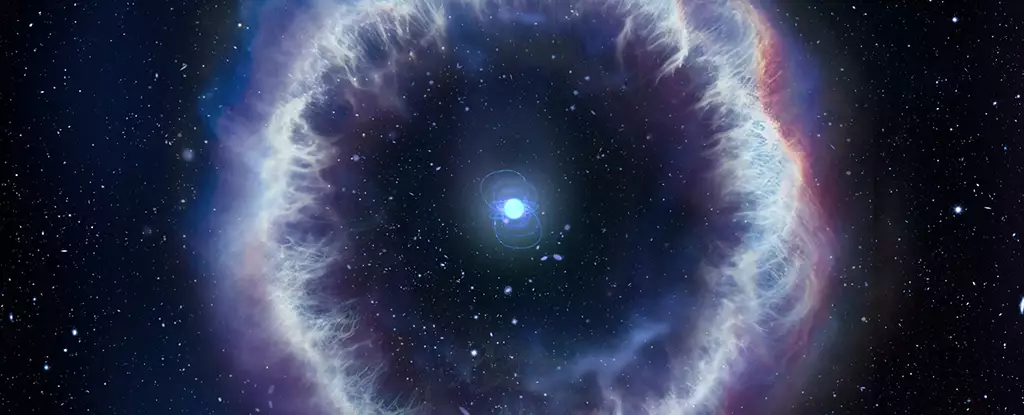Fast radio bursts (FRBs) have long been a fascinating subject of study in the field of astrophysics, with their sudden and intense blasts of radio wave energy from deep space continuing to perplex researchers. A recent study conducted by a team from the Italian National Institute for Astrophysics (INAF) has shed new light on the potential sources of these mysterious FRBs, particularly focusing on FRB 20201124A, first identified in 2020.
One of the key findings of the study was the analysis of a persistent radio source (PRS) in close proximity to the FRB. Previous observations have shown that these PRS signals are often detected near FRBs, raising the possibility of a significant relationship between the two phenomena. The researchers found that the PRS signals were likely originating from a plasma bubble surrounding the enigmatic source of the FRB. This plasma bubble, identified as an ionized nebula, consists of electrically charged gas and dust, adding to the complexity of the situation.
The data collected through observations from the Very Large Array (VLA) Radio Telescope in New Mexico pointed towards potential sources of the FRB, suggesting that it could be linked to a young magnetar or a binary system featuring a neutron star or a black hole. These celestial entities are known for their ability to generate vast amounts of energy, potentially triggering the intense signals associated with FRBs. Furthermore, the presence of a plasma bubble surrounding the source adds another layer of intrigue to the overall scenario.
While there are still unanswered questions surrounding FRB 20201124A, the findings from this study have provided valuable insights into the nature of these enigmatic phenomena. By extending the radio flux range explored for FRBs, the researchers have managed to narrow down potential explanations for the mysterious signals emitted from deep space. Astrophysicist Brendan O’Connor from Carnegie Mellon University emphasized the significance of high-resolution data in understanding the size and distribution of the FRB source, aligning with the expected characteristics of a magnetar nebula.
Additional data collected from the Northern Extended Millimeter Array (NOEMA) and Gran Telescopio Canarias telescopes played a crucial role in deciphering the signals emitted by the system over billions of light years. By separating the energy released at different wavelengths of light, the researchers gained a deeper understanding of the mechanisms behind FRBs. This enhanced resolution, akin to viewing something in higher quality, allowed for a more detailed analysis of the signals received from the distant source.
The latest study on FRBs has not only expanded our knowledge of these intriguing cosmic events but has also raised new questions regarding their origins and properties. The role of plasma bubbles, magnetars, and binary systems in generating FRBs highlights the complex nature of these phenomena. As researchers continue to delve into the mysteries of fast radio bursts, each discovery brings us closer to unraveling the secrets of the universe and the enigmatic signals it sends our way.


Leave a Reply